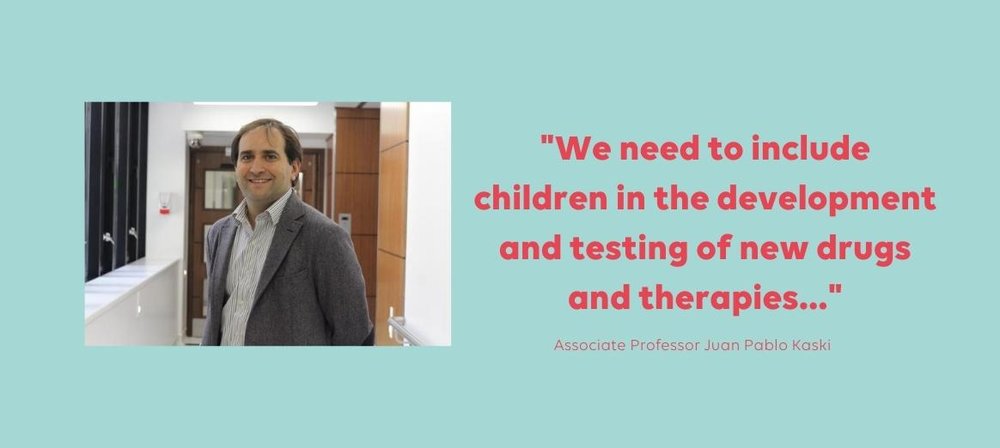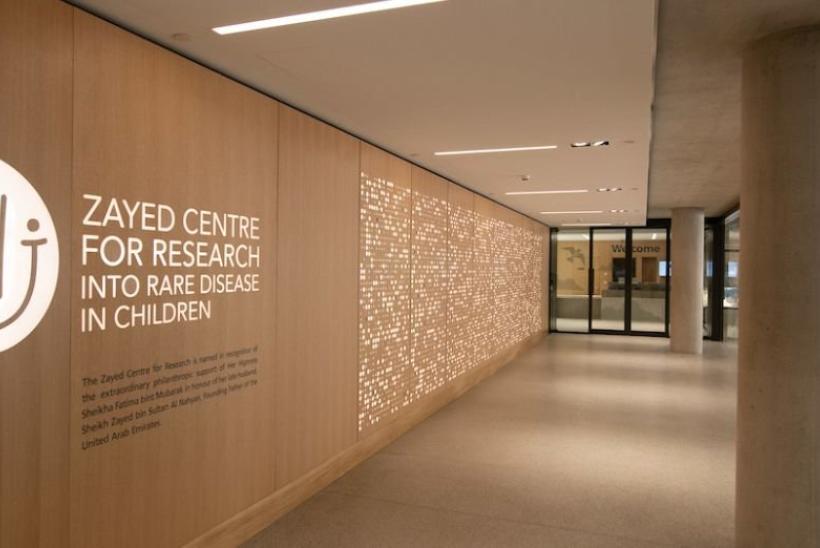New study suggests how to better manage childhood-onset hypertrophic cardiomyopathy
This World Heart Day, we're shining a light on a new landmark study from researchers at Great Ormond Street Hospital (GOSH). For the first time, the study describes the characteristics and symptoms of childhood-onset hypertrophic cardiomyopathy (HCM). It also looks at ways it could be better managed.
This study was supported by Max’s Foundation, Great Ormond Street Hospital Children’s Charity and the Medical Research Council.
HCM is the most common form of genetic heart disease and is most often inherited. It can be the cause of sudden death in young adults, often making the news when athletes collapse mid-sporting match.
It has long been thought to be a disease that affects mainly adolescents and adults. However, recent studies have shown that up to 50% of children with HCM are diagnosed before the age of 12. Studies show they are as much at risk of severe symptoms and complications from the disease as adolescents and adults.
Until now, there's been little research to understand early-onset HCM in children under 12, and how best to manage it to improve these children’s lives.
"We should not exclude children from clinical trials, treatments, and new diagnostic techniques"
Associate Professor Juan Pablo Kaski, consultant paediatric cardiologist at Great Ormond Street Hospital (GOSH), and Dr Gabrielle Norrish led this new study.
They looked at the medical history and symptoms of more than 1,200 children and young people with early-onset HCM. Together with their team, they compared information from children diagnosed with HCM younger than 12 years old with children diagnosed with HCM between the ages of 12 and 16.
They found that the younger group had similar symptoms and outlook as those diagnosed older, but that children diagnosed before 12 were more likely to experience a serious cardiac event (such as a cardiac arrest or sudden cardiac death) at a younger age. Cardiac arrest is a critical medical emergency, where the heart stops pumping blood around the body. Unless treated immediately, it leads to death within minutes.

The team, based at the UCL Centre for Inherited Cardiovascular Diseases at the Zayed Centre for Research into Rare Disease in Children, also found that children diagnosed with HCM before the age of 12 were less likely to have an implantable cardioverter defibrillator (ICD) fitted.
An ICD is a small battery-powered device placed in the chest to detect and stop irregular heartbeats (arrhythmias). An ICD continuously monitors the heartbeat and delivers electric shocks, when needed, to restore a regular heart rhythm. Children with HCM under the age of 12 may benefit from interventions such as ICDs at an earlier age.
The team hopes that this research will raise more awareness among doctors of the symptoms of childhood HCM, leading to earlier diagnosis, personalised treatment plans and therefore better prognosis for children diagnosed with HCM at a very young age. The research suggests that young children who are at risk of inheriting HCM may benefit from screening to understand if they are likely to develop the condition and treatments can be started earlier. More research is needed to understand which children with HCM will be most at risk of serious cardiac events at a young age.
Associate Professor Juan Kaski says:
"...Young children are at a greater risk of death from HCM than older adults that develop the condition. The most important thing that [the research] highlights is that we should not exclude children from clinical trials, treatments, and new diagnostic techniques.
"...We need to include children in the development and testing of new drugs and therapies as many of the treatments for HCM are not available to children, even though they may be effective.”
The Centre for Inherited Cardiovascular Diseases is one of the largest centres of its kind in the world, seeing between 6,000-7,000 patients a year from across the globe. This work was supported by Max’s Foundation, Great Ormond Street Hospital Children’s Charity and the Medical Research Council. Funding for a Research Assistant was also provided by The Dinosaur Trust.


